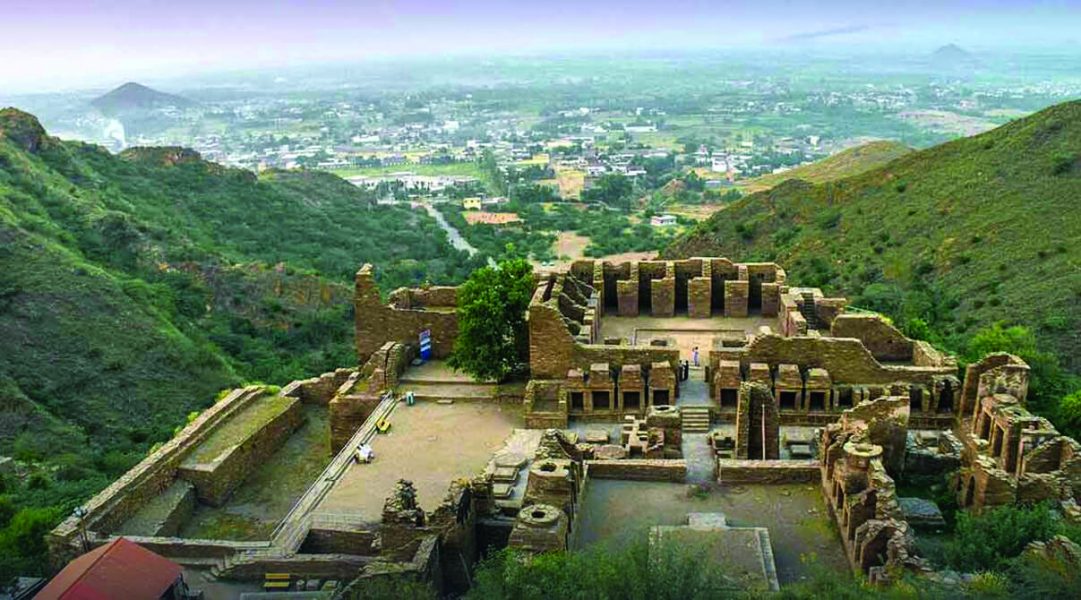A new documentary film showcases the ancient history of the Gandhara civillisation
The documentary film, ‘Gandhara: The Buddhist Heritage of Pakistan,’ featuring rich Buddhist heritage has showcased the Gandhara civilisation that flourished between the 1st CE to 7th CE in different parts of the country. The film showcasing the beautiful history of these ancient people was screened at Temple Trees on November 16 2021 as a follow up to the bilateral discussions between Prime Minister Imran Khan and Sri Lankan Prime Minister Mahinda Rajapaksa. It was jointly produced by the Pakistan High Commission in Sri Lanka and Siddhivinayak Cine Arts Private Limited, in collaboration with the Sri Lankan Ministry of Buddha Sasana, Religious and Cultural Affairs
The documentary sheds light on the historical roots of Gandhara civilsation and captures the entire landscape of historical sites with the help of a drone camera. It shows the lush green mountainous regions of the country and visibly intact structures of Buddhist historical heritage sites with panoramic scenes of high altitude mountain peaks of Pakistan.The architectural and artistic stone works of Gandhara such as statues, stupas, monasteries, temples, houses and the zigzag tracks leading to the historical sites of the remains make for an eye-catching view.
The documentary also focuses on rich historical collection of Buddhist remains discovered from different parts of the country. The artistic work of stone crafting, relics, utensils, and other artifacts take onlookers on a centuries old visual journey that recaptures the lifestyle of the civilisation from the past. The civilization has left indelible on the historical landscape of the world history.
A look at the past
Gandhara, literally means the land of fragrance. The region includes the modern day Peshawar valley, Buner, Bajaur, and hills of Swat valley. It was this region which gave birth to one the the most glorious and ancient religions of the world. From its ancient roots, the civilisation started spreading in all directions including to Afghanistan and the Potohar plateau in Punjab and Sindh.
The Gandhara civilisation represents human development, knowledge, religion, art, and history as the modern city of Taxila was a famous centre of learning for art, architecture, medicine, and religion. Similarly, according to archeologists, the city was a home to the world’s oldest recognised universities as thousands of students used to come here for education from Greece, China, Sri Lanka, Syria, and other parts of the world to study philosophy, politics, music, dance, mathematics, commerce, law, art of hunting, archery, elephant lore, and warfare, among other disciplines.
One of the Tooth Relics of Lord Buddha was discovered from the Gandhara region and preserved in the Taxila Museum. It is the region where the Buddhist civilisation in Gandhara reached its pinnacle of glory from 1st CE to the 7th CE. The first anthropomorphic statue of Lord Buddha was created in the region now called Pakistan. Also known for one of the world’s oldest Buddhist University, Thakshashila, Taxila in Pakistan is home to some of the most sacred Buddhist artifacts found during archeological excavations around the 12th century.
The remains of the world’s largest Buddhist monastery exist in Takht-e-Bahi Mardan — it was a complex of buildings consisted of assembly halls, dining areas, and a courtyard and double-storied Buddhist living quarters. It also contained a portion of a temple with a number of stupas, a courtyard, and living cells. In order to present this heritage to the Buddhist world in general and Sri Lanka in particular, the idea was conceived. It is hoped that the documentary will open up new avenues in religious tourism as well as strengthening cultural and people to people ties between the brotherly countries of Sri Lanka and Pakistan.
The Government of Pakistan, both local and foreign technicians have contributed to the documentary which is based on a screenplay that explores the historical ruins and artifacts captured in a realistic way while also exploring background historical information.



















